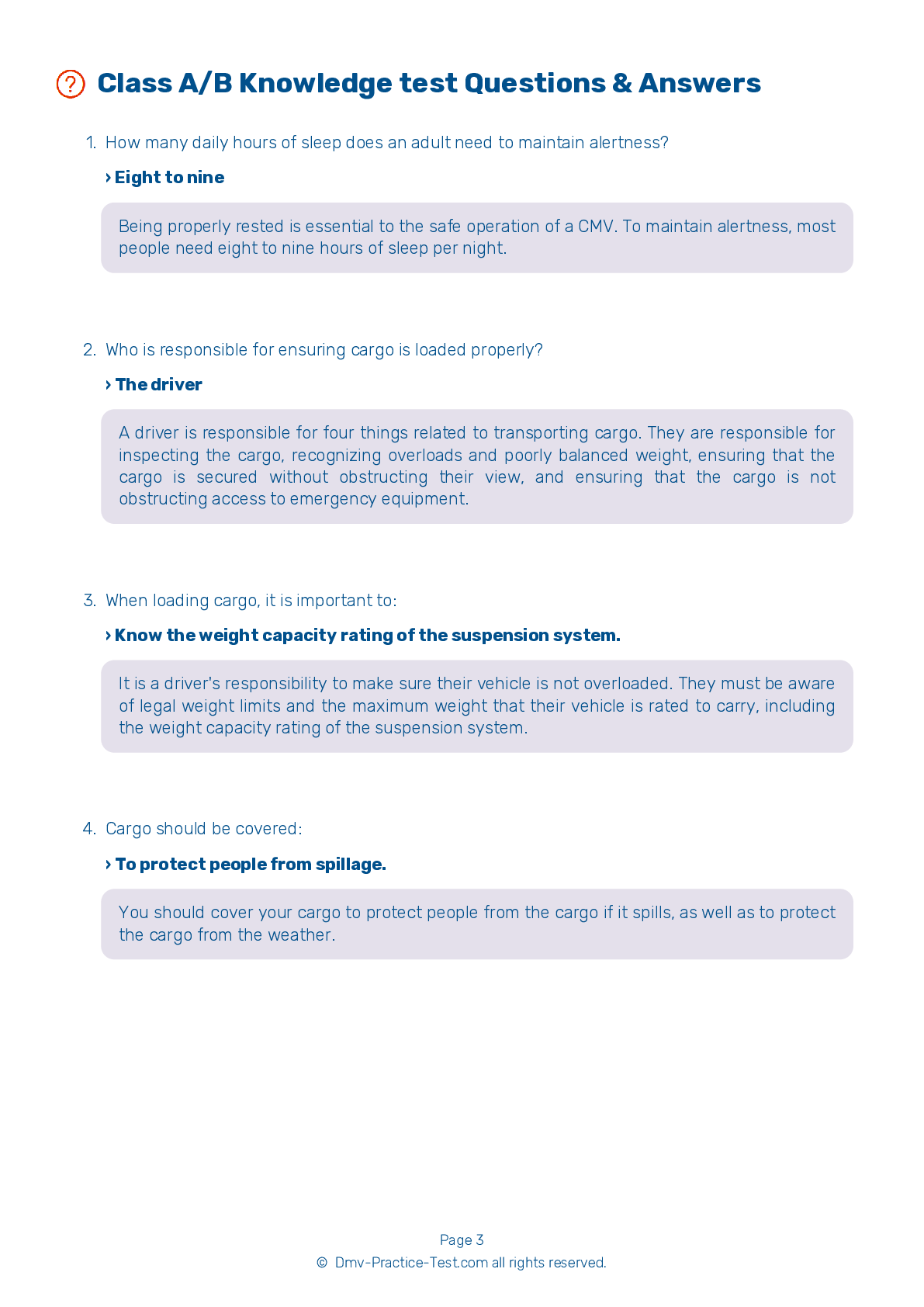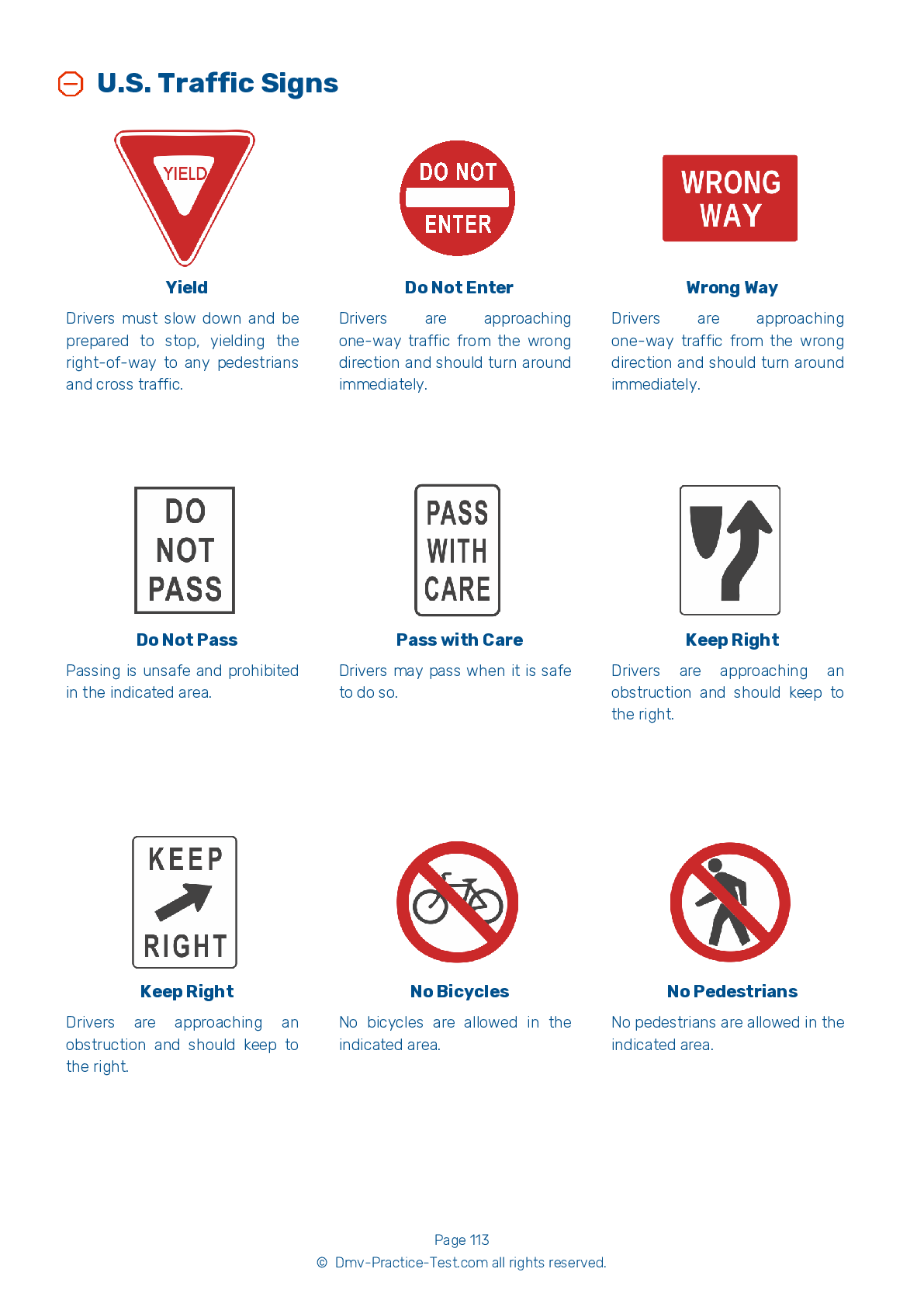Double Triple Test | Vermont 2025 #1 Page 3 of 3
Train for FREE with our Vermont CDL double triple practice test online. The official exam test consists of several obligatory parts, with all of them checking your knowledge of different blocks of road rules. If you need to obtain a VT CDL double triple license in 2025, practice as much as possible. Free sample tests published on our website will help you check and improve your knowledge and boost your grades. Please bear in mind that DMV requirements may vary from state to state.
15 . The leading factor resulting in death and injury in work zones is:
The leading cause of injury and death in roadway work zones is excessive speed by passing drivers. Lower your speed when driving through a work zone.
16 . Which of the following is acceptable if found during a pre-trip inspection?
When checking the tires as part of a pre-trip inspection, make sure the tires have sufficient tread. There should be at least 4/32 of an inch of tread in every major groove of the front tires, and at least 2/32 of an inch of tread depth on the other tires. Tire sizes should not be mismatched.
17 . All trailers made after ____ must be equipped with Anti-Lock Braking Systems (ABS).
All trailers and converter dollies manufactured on or after March 1, 1998 must have Anti-Lock Braking Systems (ABS).
18 . You should maintain at least ____ of following distance per every 10 feet of your vehicle when you are traveling more slowly than 40 mph.
At speeds below 40 mph, you should allow at least one second of following distance for every 10 feet of your vehicle. Follow the same formula when traveling at faster speeds, then add one additional second to your following distance. Remember that larger vehicles require more space to stop than smaller vehicles.
19 . Rims with welding repairs:
Wheels or rims that have had welding repairs are never safe for use.
20 . When drivers turn, they usually:
When turning, drivers usually look in the direction of their turn. If a driver fails to signal before a turn or lane change, their body movements may still provide a clue that they are planning to turn.
See the exact questions that will be on the 2025 Vermont DMV exam.
99.2% of people who use the cheat sheet pass the FIRST TIME
Lillian MCcranie explains how our CDL study guide was helpful in passing the exam and recommends it to everyone.
Cameron tells us how he purchased the CDL exam, and found it to be a useful tool which helped him pass the exam and find a job.



